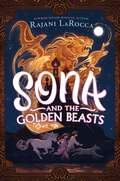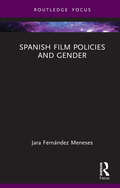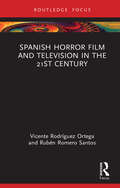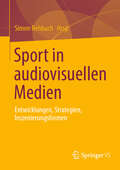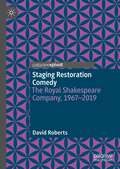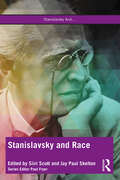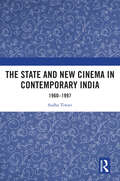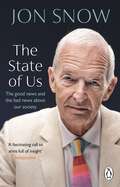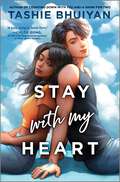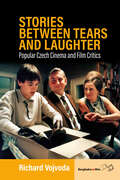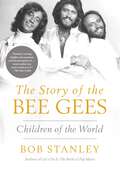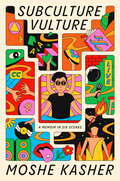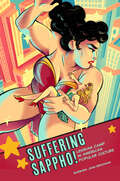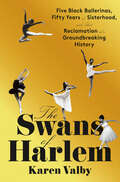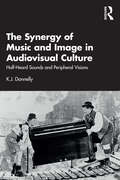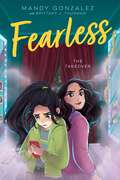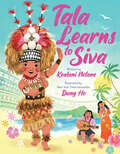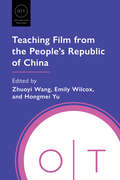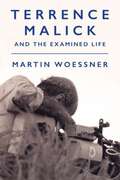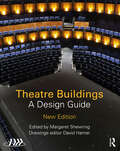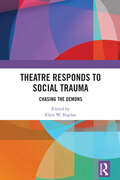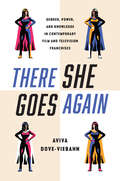- Table View
- List View
Sona and the Golden Beasts
by Rajani LaRoccaFrom Newbery Honor and Walter Award–winning author Rajani LaRocca comes a gripping middle grade fantasy perfect for fans of The Serpent’s Secret and The Last Mapmaker. Though music is outlawed in the land of Devia, Sona hears it everywhere. Sona is a Malech, a member of the ruling class that conquered Devia centuries ago. Malechs forbade music to prevent the native Devans from using their magic, and Sona hides her abilities lest they put her in danger.Then Sona discovers an orphaned wolf pup. She believes the pup, with its golden ears, might be related to one of the five sacred beasts of Devia, and she vows to keep it safe. That means bringing the pup in tow when Sona embarks on a perilous quest, along with a Devan boy, to secure the nectar of life for a loved one who has fallen gravely ill. On the journey, as Sona uncovers secrets about the Malechian empire and her own identity, she realizes that the fate of the sacred beasts, and the future of Devia, just might come down to her.This captivating fantasy novel by award-winning author Rajani LaRocca will sweep readers into Sona’s quest across the land of Devia as she grapples with the lasting impact of colonial rule and learns to fight for what she knows is right.
Spanish Film Policies and Gender (Routledge Focus on Media and Cultural Studies)
by Jara Fernández MenesesThis book provides a comprehensive cultural and historical account of the key film policies put into place by the Spanish state between 1980 and 2010 through a gendered lens, framing these policies within the wider context of European film legislation.Departing from the belief that there is no such thing as an objective and value-neutral approach to policy analysis because our society is organised around gender, this volume builds upon Pierre Bourdieu’s theory of field to propose that film policies do not emerge in a vacuum because they respond to different demands from those agents involved in the field of the Spanish cinema. By so doing, it critically assesses how these policies have come into being, by whom, in response to what interests, how they have shaped the Spanish film industry, and how far and in what ways they have tackled gender inequality in the Spanish film industry.This book will be of great interest to scholars and students of Spanish cinema, gender studies, film industry studies, film policy, and feminist film studies.
Spanish Horror Film and Television in the 21st Century (Routledge Focus on Media and Cultural Studies)
by Vicente Rodríguez Ortega Rubén Romero SantosThis book provides an up-to-date, in-depth survey of 21st-century Spanish horror film and media, exploring both aesthetics and industrial dynamics. It offers detailed analysis of contemporary films and TV series as well as novel approaches to key works within the history of Spanish cinema. While addressing the specificities of the Spanish landscape, this volume also situates the national cinematic output within the international arena, understanding film production and reception as continuously changing processes in which a variety of economic, social and cultural factors intervene. The book first analyzes the main horror trends emerging in the early 2000s, then approaches genre hybridization and the rise of new filmmakers since the 2010s with a special focus on gender issues and the reconfiguration of the past, before addressing the impact of streaming services within the Spanish film panorama, from a production and distribution standpoint. This book will be of keen interest to scholars and students in the areas of film studies, media studies, TV studies, horror, Spanish cultural studies and production studies.
Sparkles, No Sparkles
by Shannon McNeillAdorable animals go for a glittering night at the theater in this hilarious picture book, a perfect read-aloud tale for very young readers.A frog has no sparkle.A poodle has no sparkle.A pigeon has no sparkle.Not to worry! A cape has sparkle, a crown has sparkle and boots have sparkle.Some wily animals decide to hit the stage, leaving the actors without costumes. After the animals get their moment in the spotlight, chaos ensues . . . but luckily there are some chicks with sparkle to save the day.
Sport in audiovisuellen Medien: Entwicklungen, Strategien, Inszenierungsformen
by Simon RehbachDer Sammelband befasst sich mit der gegenwärtigen Darstellung von Sport in audiovisuellen Medien und erörtert verschiedene Bedingungen und Verfahren in Bezug auf sportliche Wettkämpfe wie auch Akteur_innen in Fernsehen und Internet. Die Beiträge widmen sich aus mehreren medien- und kommunikationswissenschaftlichen Perspektiven unter anderem Live-Übertragungen von Sport, 360-Grad-Videos, dem eSport, der Tätigkeit von TV-Expert_innen, der Darstellung von Fußballtrainer_innen, Instagram-Videos und dem Personal Branding von Sportler_innen.
Staging Restoration Comedy: The Royal Shakespeare Company, 1967-2019
by David RobertsSince its 1967 production of Vanbrugh’s The Relapse, the Royal Shakespeare Company has been the world’s leading producer of Restoration Comedies. This book is the first to document and critique the company’s history of engagement with that repertoire. It reviews the spaces in which productions have been performed, design principles, casting, voicing, textual adaptation, musical direction, actor perspectives, and the problems of how to confront, adopt or depart from received notions of Restoration style. It goes on to posit that, for all the RSC’s explorations of Restoration Comedy, the company has maintained the repertoire as a fringe interest played out in niche spaces, while recycling many of the assumptions it claims to challenge, and that what is needed is the writer-led intervention seen in RSC and National Theatre adaptations of French drama from the same period. Only then can Restoration Comedy begin to engage wider audiences in new sites of political, historical andcultural meaning.
Stanislavsky and Race: Questioning the “System” in the 21st Century (Stanislavsky And...)
by Siiri Scott Paul SkeltonStanislavsky and Race is the first book to explore the role that Konstantin Stanislavsky’s “system” and its legacies can play in building, troubling and illuminating today’s anti-racist theatre practices. This collection of essays from leading figures in the field of actor training stands not only as a resource for a new area of academic enquiry, but also for students, actors, directors, teachers and academics who are engaged in making inclusive contemporary theatre. In seeking to dismantle the dogma that surrounds much actor training and replace it with a culturally competent approach that will benefit our entire community, the “system” is approached from a range of perspectives featuring the research, reflections and provocations of 20 different international artists interrogating Stanislavsky’s approach through the lens of race, place and identity. Stanislavsky and … is a series of multi-perspectival collections that bring the enduring legacy of Stanislavskian actor training into the spotlight of contemporary performance culture, making them ideal for students, teachers and scholars of acting, actor training and directing.
Stardust: Cinematic Archives at the End of the World
by Hannah GoodwinAn exploration of the fundamental bond between cinema and the cosmos The advent of cinema occurred alongside pivotal developments in astronomy and astrophysics, including Albert Einstein&’s theories of relativity, all of which dramatically altered our conception of time and provided new means of envisioning the limits of our world. Tracing the many aesthetic, philosophical, and technological parallels between these fields, Stardust explores how cinema has routinely looked toward the cosmos to reflect our collective anxiety about a universe without us. Employing a &“cosmocinematic gaze,&” Hannah Goodwin uses the metaphorical frameworks from astronomy to posit new understandings of cinematic time and underscore the role of light in generating archives for an uncertain future. Surveying a broad range of works, including silent-era educational films, avant-garde experimental works, and contemporary blockbusters, she carves out a distinctive area of film analysis that extends its reach far beyond mainstream science fiction to explore films that reckon with a future in which humans are absent. This expansive study details the shared affinities between cinema and the stars in order to demonstrate how filmmakers have used cosmic imagery and themes to respond to the twentieth century&’s moments of existential dread, from World War I to the atomic age to our current moment of environmental collapse. As our outlook on the future continues to change, Stardust illuminates the promise of cinema to bear witness to humanity&’s fragile existence within the vast expanse of the universe.
The State and New Cinema in Contemporary India: 1960–1997
by Sudha TiwariThis book examines the relationship between the newly independent Indian state and its New Cinema movement. It looks at state formative practices articulating themselves as cultural policy. It presents an institutional history of the Film Finance Corporation (FFC), later the National Film Development Corporation (NFDC), and their patronage of the New Cinema in India, from the 1960s to the 1990s, bringing into focus an extraordinary but neglected cultural moment in Indian film history and in the history of contemporary India. The chapters not only document the artistic pursuit of cinema, but also the emergence of a larger field where the market, political inclinations of the Indian state, and the more complex determinants of culture intersect — how the New Cinema movement faced external challenges from the industrial lobby and politicians, as well as experienced deep rifts from within. It also shows how the Emergency, the Janata Party regime, economic liberalization, and the opening of airwaves all left their impact on the New Cinema. The volume will be of great interest to scholars and researchers of film studies, politics and public policy, especially cultural policy, media and culture studies, and South Asian studies.
The State of Us: The good news and the bad news about our society
by Jon Snow'A fascinating call to arms full of insight' IndependentAfter four decades broadcasting to the nation each night, Jon Snow gives vent to his opinions on the state of our nation . . . the good news and the bad newsIt is rare in history that so many nations in the developed world are in crisis at the same time. There has been a disintegration of trust in political leaders and in the media that holds them to account. For all the progress humankind has made, for all the inventions and new technologies, our society is being undermined by inequality. To fix it, we must begin by seeking out the truth about our world.In The State of Us, Jon Snow traces how the life of the nation has changed across his five-decade career, from getting thrown out of university for protesting apartheid to interviewing every prime minister since Margaret Thatcher.In doing so, he shows how the greatest problems at home and abroad so often come down to inequality and an unwillingness to confront it. But that is not our fate. Despite the challenges, Snow has witnessed profound social progress. In this passionate rallying cry, he argues that at its best, journalism reflects not just who we are now, but who we can be.We've had enough of division; the future is for us.
Stay with My Heart
by Tashie BhuiyanFrom the author of Counting Down with You and A Show for Two comes a new YA contemporary about a girl who accidentally sabotages an up-and-coming local band and falls for the guitarist while secretly trying to make up for her mistake.Liana Sarkar lives and breathes music, hoping to follow in the footsteps of her A&R coordinator father. Maybe if she succeeds, he&’ll finally give her the time of day instead of drowning himself in work to distract from the grief of her mother&’s passing.When Liana accidentally sabotages an up-and-coming local band, Third Eye, she makes it her mission to steer them towards success—without them discovering her role in their setback. But as she gets closer to Third Eye, especially their enigmatic leader Skyler Moon, it becomes harder to hide the truth.With both her heart and their futures on the line, will Liana be able to undo the damage she&’s caused?Praise for A Show for Two&“You&’ll fall head-over-heels in love with these characters while they fall in love with each other.&” —Chloe Gong, #1 New York Times bestselling author of These Violent Delights&“Tender and bittersweet.&” —Tahereh Mafi, #1 New York Times bestselling author of Shatter MePraise for Counting Down with You&“I. Love. This. Book.&” —Mark Oshiro, award-winning author of Anger Is a Gift&“Steals your heart from start to finish.&” —Emma Lord, New York Times bestselling author of You Have a Match&“Hand to fans of Netflix hit Never Have I Ever.&” —Booklist
Stories between Tears and Laughter: Popular Czech Cinema and Film Critics
by Richard VojvodaWhile histories of Czech cinema often highlight the quality of Czechoslovak New Wave films made in the 1960s, post-socialist Czech cinema receives little attention. Through a methodology of historical reception, Stories between Tears and Laughter explores how attitudes towards post-socialist Czech cinema have shifted from viewing it as radical “art cinema” and more towards popular cinema. By analyzing publicity materials, reviews, and articles, Richard Vojvoda offers a new perspective on the notions of cultural value and quality that have been shaping the history of post-socialist Czech cinema.
The Story of The Bee Gees: Children of the World
by Bob StanleyA dazzling biography of one of the bestselling bands of all time, told with brilliant insight by renowned pop music scholar Bob Stanley.The world is full of Bee Gees fans. Yet for a band of such renown, little is known about Barry, Maurice, and Robin Gibb. People tend to have their favorite era of the Bee Gees's career, but many listeners are also conscious that there is more to uncover about the band. This book will provide the perfect solution, by pulling together every fascinating strand to tell the story of a group with the imagination of the Beatles, the pop craft of ABBA, the drama of Fleetwood Mac, and the emotional heft of the Beach Boys. Uniquely, the Bee Gees's tale spans the entire modern pop era—they are the only group to have scored British top-ten singles in the '60s, '70s, '80s, and &‘90s—and includes world-conquering disco successes like 'Stayin' Alive' and 'More Than a Woman', both from the soundtrack of the hit film Saturday Night Fever. But the Bee Gees's extraordinary career was one of highs and lows. From a vicious but temporary split in 1969 to several unreleased albums, disastrous TV and film appearances, and a demoralising cabaret season, the group weren't always revelling in the glow of million-selling albums, private jets, and UNICEF concerts. Yet, even in the Gibbs' darkest times, their music was rarely out of the charts, as sung by the likes of Al Green, Kenny Rogers and Dolly Parton, and Destiny's Child. Capturing the human story at the heart of the Bee Gees, this book is a lyrical and stylish read, delighting hardcore fans with its details while engaging casual pop readers who simply want to know more about this important and enigmatic group.
Subculture Vulture: A Memoir in Six Scenes
by Moshe KasherA &“hilarious&” (Dax Shepard), &“surprisingly emotional trip&” (The Chainsmokers) through deep American subcultures ranging from Burning Man to Alcoholics Anonymous, by the writer and comedian Moshe Kasher &“Part history lesson, part standup set and, often, part love letter . . . Kasher&’s ability to blend humor with homework works almost too well.&”—The New York TimesAfter bottoming out, being institutionalized, and getting sober all by the tender age of fifteen, Moshe Kasher found himself asking: &“What&’s next?&” Over the ensuing decades, he discovered the answer: a lot.There was his time as a boy-king of Alcoholics Anonymous, a kind of pubescent proselytizer for other teens getting and staying sober. He was a rave promoter turned DJ turned sober ecstasy dealer in San Francisco&’s techno warehouse party scene of the 1990s. For fifteen years he worked as a psychedelic security guard at Burning Man, fishing hippies out of hidden chambers they&’d constructed to try to sneak into the event. As a child of deaf parents, Kasher became deeply immersed in deaf culture and sign language interpretation, translating everything from end-of-life care to horny deaf clients&’ attempts to hire sex workers. He reconnects and tries to make peace with his ultra-Hasidic Jewish upbringing after the death of his father before finally settling into the comedy scene where he now makes his living.Each of these scenes gets a gonzo historiographical rundown before Kasher enters the narrative and tells the story of the lives he has spent careening from one to the next. A razor-sharp, gut-wrenchingly funny, and surprisingly moving tour of some of the most wildly distinct subcultures a person can experience, Subculture Vulture deftly weaves together memoir and propulsive cultural history. It&’s a story of finding your people, over and over again, in different settings, and of knowing without a doubt that wherever you are is where you&’re supposed to be.
Suffering Sappho!: Lesbian Camp in American Popular Culture
by Barbara Jane BrickmanAn ever-expanding and panicked Wonder Woman lurches through a city skyline begging Steve to stop her. A twisted queen of sorority row crashes her convertible trying to escape her queer shame. A suave butch emcee introduces the sequined and feathered stars of the era’s most celebrated drag revue. For an unsettled and retrenching postwar America, these startling figures betrayed the failure of promised consensus and appeasing conformity. They could also be cruel, painful, and disciplinary jokes. It turns out that an obsession with managing gender and female sexuality after the war would hardly contain them. On the contrary, it spread their campy manifestations throughout mainstream culture. Offering the first major consideration of lesbian camp in American popular culture, Suffering Sappho! traces a larger-than-life lesbian menace across midcentury media forms to propose five prototypical queer icons—the sicko, the monster, the spinster, the Amazon, and the rebel. On the pages of comics and sensational pulp fiction and the dramas of television and drive-in movies, Barbara Jane Brickman discovers evidence not just of campy sexual deviants but of troubling female performers, whose failures could be epic but whose subversive potential could inspire. Supplemental images of interest related to this title: George and Lomas; Connie Minerva; Cat On Hot Tin; and Beulah and Oriole.
The Swans of Harlem: Five Black Ballerinas, Fifty Years of Sisterhood, and Their Reclamation of a Groundbreaking History
by Karen ValbyA MOST ANTICIPATED BOOK • The forgotten story of a pioneering group of five Black ballerinas and their fifty-year sisterhood, a legacy erased from history—until now.&“This is the kind of history I wish I learned as a child dreaming of the stage!&” —Misty Copeland, author of Black Ballerinas: My Journey to Our Legacy &“Utterly absorbing, flawlessly-researched…Vibrant, propulsive, and inspiring, The Swans of Harlem is a richly drawn portrait of five courageous women whose contributions have been silenced for too long!&” —Tia Williams, author of A Love Song for Ricki WildeAt the height of the Civil Rights movement, Lydia Abarca was a Black prima ballerina with a major international dance company—the Dance Theatre of Harlem, a troupe of women and men who became each other&’s chosen family. She was the first Black company ballerina on the cover of Dance magazine, an Essence cover star; she was cast in The Wiz and in a Bob Fosse production on Broadway. She performed in some of ballet&’s most iconic works with other trailblazing ballerinas, including the young women who became her closest friends—founding Dance Theatre of Harlem members Gayle McKinney-Griffith and Sheila Rohan, as well as first-generation dancers Karlya Shelton and Marcia Sells.These Swans of Harlem performed for the Queen of England, Mick Jagger, and Stevie Wonder, on the same bill as Josephine Baker, at the White House, and beyond. But decades later there was almost no record of their groundbreaking history to be found. Out of a sisterhood that had grown even deeper with the years, these Swans joined forces again—to share their story with the world.Captivating, rich in vivid detail and character, and steeped in the glamour and grit of professional ballet, The Swans of Harlem is a riveting account of five extraordinarily accomplished women, a celebration of both their historic careers and the sustaining, grounding power of female friendship, and a window into the robust history of Black ballet, hidden for too long.
The Synergy of Music and Image in Audiovisual Culture: Half-Heard Sounds and Peripheral Visions
by K.J. DonnellyThe Synergy of Music and Image in Audiovisual Culture: Half-Heard Sounds and Peripheral Visions asks what it means to understand music as part of an audiovisual whole, rather than separate components of music and film. Bringing together revised and updated essays on music in a variety of media – including film, television, and video games – this book explores the importance of partially perceived and registered auditory and visual elements and cultural context in creating unique audiovisual experiences. Critiquing traditional models of the film score, The Synergy of Music and Image in Audiovisual Culture enables readers across music, film, and cultural studies to approach and think about audiovisual culture in new ways.
The Takeover (Fearless Series #4)
by Mandy GonzalezBetter Nate than Ever meets Love Sugar Magic in this fourth and final novel in the Fearless middle grade series from Hamilton and Broadway star Mandy Gonzalez about a young thespian and emerging influencer whose social media gets hacked.Twelve-year-old April DaSilva loves performing—and connecting with fans on her social media accounts. Thanks to her role in the hit Broadway show Our Time, she is close to reaching a huge follower milestone. In celebration, she&’s hosting a contest: three lucky followers will win a special backstage tour and tickets to the show. April feels on top of the world, but her brother isn&’t so thrilled about her attention always being glued to a screen. His warnings don&’t bother April. What&’s wrong with wanting more followers and likes? When meet and greet day arrives, the Squad helps make the event special. All goes without a hitch until April attempts to log into her social media…it&’s gone. Her previous posts have been erased, and a new one that April didn&’t make pops up. It&’s even worse than she thought…she&’s been hacked. The Squad tries to uncover the culprit while April becomes a puppet of her stolen account—desperately trying to keep up with the public appearances promised in her name until she can reclaim ownership of the online presence she&’s worked so hard for. But she suddenly has much more to worry about when it&’s announced that the entire Squad has outgrown their roles in Our Time and may soon be replaced…
Tala Learns to Siva
by Kealani NetaneA lovingly empowering story about finding courage and strength in your family, history, and community through a traditional and cherished Samoan dance, taualuga. Written by debut author, Kealani Netane, and illustrated by New York Times bestselling illustrator, Dung Ho.Tala wishes that she could dance the traditional Samoan dance, the taualuga, just like her Aunty Sina. But Tala's legs are too bouncy, her arms are too stiff, and she doesn't have Aunty's 'glow' when she dances. When Tala prepares to perform at her Grandma's birthday, she freezes on the stage. Will she find the strength and inspiration to help her dance?Newcomer Kealani Netane crafts a heartwarming story about finding your inner strength through the love and guidance of your family. New York Times bestselling illustrator Dung Ho's cheerful colors and sweet characters bring this loving story to life, making this the perfect gift for little ones who are learning how to follow their hearts and make their own paths.
Teaching Film from the People's Republic of China (Options for Teaching)
by Zhuoyi Wang, Emily Wilcox, and Hongmei YuThis volume brings a diverse range of voices--from anthropology, communication studies, ethnomusicology, film, history, literature, linguistics, sociology, theater, and urban geography--into the conversation about film from the People's Republic of China. Essays seek to answer what films can reveal or obscure about Chinese history and society and demonstrate how studying films from the PRC can introduce students to larger issues of historical consciousness and media representation.The volume addresses not only postsocialist fictional films but also a wide variety of other subjects including socialist period films, documentaries, films by or about people from ethnic minority groups, film music, the perspectives of female characters, martial arts cinema, and remakes of South Korean films. By exploring how films represent power, traditions, and ideologies, students learn about both the complexity of the PRC and the importance of cross-cultural and cross-ideological understanding.
Television Publics in South Asia: Mediated Politics and Culture
by S.M. Shameem Reza and Ratan Kumar RoyTelevision has a prime role to play in the formation of discursive domains in the everyday life of South Asian publics. This book explores various television media practices, social processes, mediated political experiences and everyday cultural compositions from Afghanistan, Bangladesh, India, Nepal, Pakistan and Sri Lanka. With the help of country specific case studies, it captures broad range of themes which foreground the publics and their real-life experiences of television in the region. The essays in this book discuss gendered television spaces; women seeking solace from television in pandemic; the taboo in digital tv dramas; television viewership and localizing publics; changing viewership from television to OTT; news and public perception of death; re-defining ‘the national’; theatrical television; and post truth television news, among other key issues. Rich in ethnographic case studies, this volume will be a useful resource for scholars and researchers of media and communication studies, journalism, digital media, South Asian studies, cultural studies, sociology and social anthropology.
Terrence Malick and the Examined Life (Intellectual History of the Modern Age)
by Martin WoessnerTerrence Malick is one of American cinema’s most celebrated filmmakers. His films—from Badlands (1973) and Days of Heaven (1978) to The Thin Red Line (1998), The Tree of Life (2011), and, most recently, A Hidden Life (2019)—have been heralded for their artistry and lauded for their beauty, but what really sets them apart is their ideas. Terrence Malick and the Examined Life is the most comprehensive account to date of this unparalleled filmmaker’s intellectual and artistic development.Utilizing newly available archival sources to offer original interpretations of his canonical films, Martin Woessner illuminates Malick’s early education in philosophy at Harvard and Oxford as well as his cinematic apprenticeship at the American Film Institute to show how a young student searching for personal meaning became a famous director of Hollywood films. Woessner’s book presents a rich, interdisciplinary exploration of the many texts, thinkers, and traditions that made this transformation possible—from the novels of Hamlin Garland, James Jones, and Walker Percy to the philosophies of Stanley Cavell, Martin Heidegger, and Søren Kierkegaard to road movies, Hollywood Westerns, and the comedies of Jean Renoir. Situating Malick’s filmmaking within recent intellectual and cultural history, Woessner highlights its lasting contributions to both American cinema and the life of the mind.Terrence Malick and the Examined Life suggests it is time for philosophy to be viewed not merely as an academic subject, overseen by experts, but also as a way of life, open to each and every moviegoer.
Theatre Buildings: A Design Guide
by Margaret Shewring David HamerIn 2021, its Diamond Jubilee year, the Association of British Theatre Technicians (ABTT) undertook to revise Theatre Buildings: A Design Guide (Routledge, 2010). This new edition (Routledge, 2023) has substantially re-written text with fresh images and entirely new reference projects, providing essential guidance for all those engaged in the design of theatre buildings. Edited by Margaret Shewring (Emeritus Reader, University of Warwick, former Director of the Postgraduate Diploma and MA in Theatre Consultancy), this new publication is written by a team of international experts, architects, theatre consultants, acousticians, engineers and industry professionals led by Tim Foster (Foster Wilson Size) and Robin Townley (CEO of the ABTT). It provides an invaluable resource for those looking to build, remodel or conserve theatre buildings, taking into account the significant changes which have taken place in the last twelve years in all aspects of theatre design and technical practice. It locates those changes in the wider context of the need for sustainability in the theatre industry in response to the climate emergency, inclusivity, diversity of access, placemaking and concerns for health and wellbeing. This new edition provides guidance for anyone who seeks inspiration and encouragement to create or improve a place of entertainment or who seeks to understand what might be required to accommodate an audience for the presentation of live performance and the successful use, operation and organisation of such a venue. Its generous format and the thirty-two new reference projects, more than 260 high-resolution colour images and 175 diagrams and specially commissioned plans make it accessible and informative both to the general reader and the professional specialist.
Theatre Responds to Social Trauma: Chasing the Demons (Routledge Series in Equity, Diversity, and Inclusion in Theatre and Performance)
by Ellen W. KaplanThis book is a collection of chapters by playwrights, directors, devisers, scholars, and educators whose praxis involves representing, theorizing, and performing social trauma.Chapters explore how psychic catastrophes and ruptures are often embedded in social systems of oppression and forged in zones of conflict within and across national borders. Through multiple lenses and diverse approaches, the authors examine the connections between collective trauma, social identity, and personal struggle. We look at the generational transmission of trauma, socially induced pathologies, and societal re-inscriptions of trauma, from mass incarceration to war-induced psychoses, from gendered violence through racist practices. Collective trauma may shape, protect, and preserve group identity, promoting a sense of cohesion and meaning, even as it shakes individuals through pain. Engaging with communities under significant stress through artistic practice offers a path towards reconstructing the meaning(s) of social trauma, making sense of the past, understanding the present, and re-visioning the future.The chapters combine theoretical and practical work, exploring the conceptual foundations and the artists’ processes as they interrogate the intersections of personal grief and communal mourning, through drama, poetry, and embodied performance.
There She Goes Again: Gender, Power, and Knowledge in Contemporary Film and Television Franchises
by Aviva Dove-ViebahnThere She Goes Again interrogates the representation of ostensibly powerful women in transmedia franchises, examining how presumed feminine traits—love, empathy, altruism, diplomacy—are alternately lauded and repudiated as possibilities for effecting long-lasting social change. By questioning how these franchises reimagine their protagonists over time, the book reflects on the role that gendered exceptionalism plays in social and political action, as well as what forms of knowledge and power are presumed distinctly feminine. The franchises explored in this book illustrate the ambivalent (post)feminist representation of women protagonists as uniquely gifted in ways both gendered and seemingly ungendered, and yet inherently bound to expressions of their femininity. At heart,There She Goes Again asks under what terms and in what contexts women protagonists are imagined, envisioned, embodied, and replicated in media. Especially now, in a period of gradually increasing representation, women protagonists demonstrate the importance of considering how we should define—and whether we need—feminine forms of knowledge and power.
